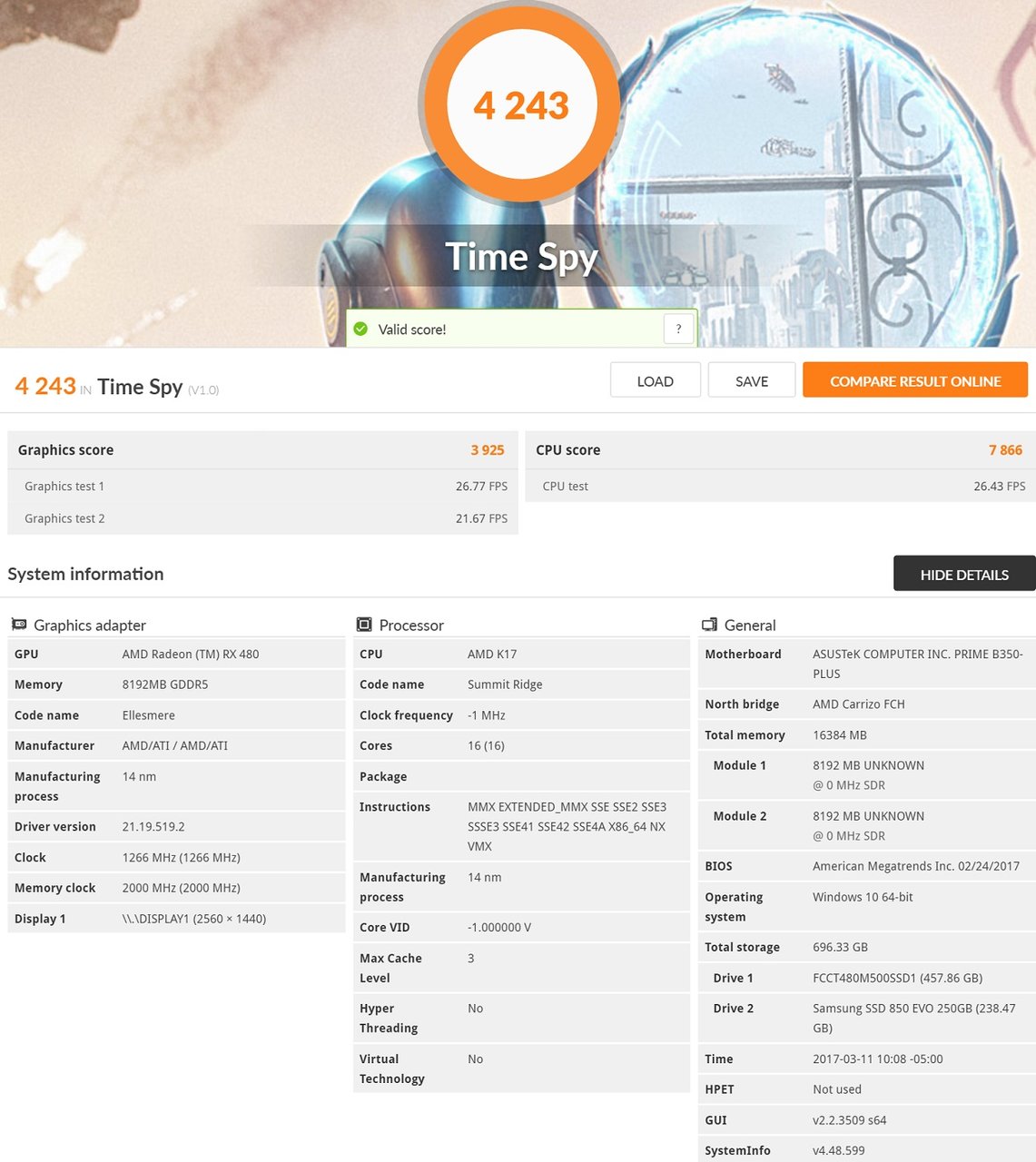sirmonkey1985
[H]ard|DCer of the Month - July 2010
- Joined
- Sep 13, 2008
- Messages
- 22,414
I think we'll probably see 4c parts based off of both Summit Ridge and Raven Ridge. Potentially even RR parts without graphics.
I doubt they will make a unique 4c mask without any graphics; at their volume they want to be able to use a wafer as much as possible even if individual dies aren't all fully utilized.
Going by the options on my board they can definitely harvest 2+2 and 4+0 parts. Its not impossible they could harvest 3+1 one parts as well (3+3 is an option for me, cant recall for sure what else and don't feel like bouncing right now).
the way the die is laid out it would be really easy for it to be converted to a 4c part since each 4 core cluster is on it's own half the die. it's not like they're making a 4c processor from scratch and their yields aren't bad enough to be worth butchering 8c parts for 4c parts.. the chips that fail to meet spec requirements for the 4c/8t will probably be converted to the 4c/4t chips. and agree with what snowdog said with the 6c chips but i'd bet the initial ones they use are probably ones that couldn't hit spec clock speeds completely stable with all 8 cores, maybe later on you'll start seeing perfectly working 8c chips with disabled cores..
Last edited:
![[H]ard|Forum](/styles/hardforum/xenforo/logo_dark.png)
